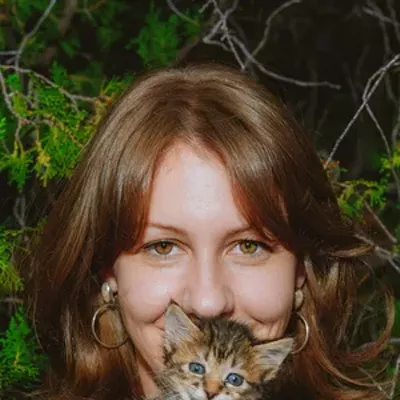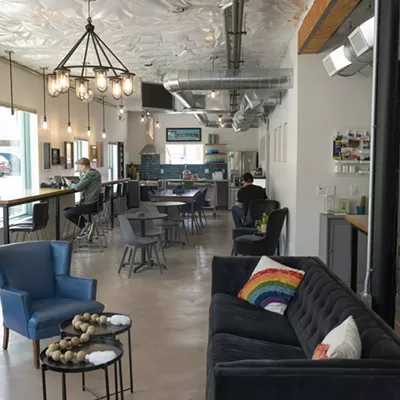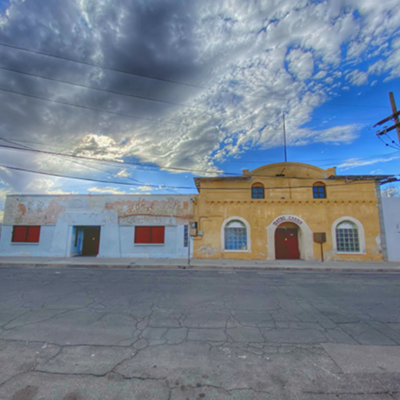The National Center for Education Statistics estimates that nearly 5% of American adults are “functionally illiterate,” which can make it hard to maintain a job, understand critical paperwork, and even navigate the world. For a decade, one local nonprofit has worked to improve reading comprehension and passion throughout Southern Arizona.
Literacy Connects is a nonprofit organization that aims to provide people with opportunities through literacy and creative expression. Literacy Connects Executive Director Matt Tarver-Wahlquist explained that the organization has grown a lot over the past 10 years.
Literacy Connects was born in the wake of a Tucson Regional Town Hall. The group was looking at factors that affected the well-being and the economic health of the Tucson community. They identified literacy as the most important factor in someone’s economic well-being, so they looked to improve the literacy landscape in Tucson.
They identified a number of small organizations doing literacy work in Tucson, including Literacy Volunteers of Tucson, Reading Seed, Stories that Soar!, Reach out and Read Southern Arizona and Literacy for Life Coalition. They thought that if those organizations came together to form a large literacy organization, it would better serve the community.
On July 1, 2011, those five organizations had merged into one organization: Literacy Connects. The nonprofit still operates many of the programs from its founding organizations, including the Reading Seed for children and various adult literacy programs.
The Reading Seed program started out focused on kindergartners through fifth graders. Teachers would refer individual students who would be provided with reading coaches. While they still do that, they now focus more on kindergarten through second grade since they found that starting earlier produced better results.
Literacy Connects also offers adult basic literacy and General Education Development test preparation in English and Spanish. When the pandemic started, they moved services online and they were able to aid people they otherwise wouldn’t have been able to reach. They realized that providing classes online worked better for some people who had transportation issues or other challenges.
Literacy Connects provides services across the entire age spectrum and provides services for more than 40,000 people in a typical year. They also partner with the International Rescue Committee to provide English language instruction for refugees and have a garden on their property where refugees can grow their own food, according to Tarver-Wahlquist.
While they only have 30 employees, they tap the skills of more than 1,000 volunteers.
Hope Beck Goldsmith has been a Reading Seed volunteer for five years and currently works with two kindergartners and a first grader.
“It is so special to connect one-on-one with the kids,” Goldsmith said. “I see the same children every week, all school year, so we have formed a relationship.”
Tarver-Wahlquist said the volunteers fill an important role.
“They don’t ‘teach kids to read,’ teachers teach kids to read,” Tarver-Wahlquist said. “What we do is we try to get kids to identify as readers.”
In the Reading Seed program, they pair a volunteer with a student and they get to meet one-on-one. The volunteer brings them a book every time they meet and the student gets to take the book home. This allows the volunteers to get to know the kids’ interests and find books that would be interesting to the student.
“In doing so we’re creating a positive association between the child and between reading, so that this book in front of them is not something that someone is forcing them to do, it’s not boring, it’s not a task,” Tarver-Wahlquist said. “It’s actually something they want to be a part of and they want to be involved in.”
Another program is Stories that Soar, where they partner with a school and bring a box called “the magic box.” The idea of the magic box is that it eats stories, so the kids have the opportunity to write down stories and feed it to the magic box.
Since there isn’t a teacher grading the stories or anyone checking the grammar, the Stories that Soar program gives students the opportunity to focus on being creative. Literacy Connects then collects the box and has a group of artists read through the stories and select a few of the stories to be performed by professional actors in front of the school.
“It really gets kids excited about reading and it honors their stories by trying to do something high quality with them,” Tarver-Wahlquist said.
When the pandemic hit, they could no longer do live stage performances, so they changed Stories that Soar to Stories that Stream. They used professional artists, clay animation specialists, animators, actors, and green screens to put those stories together through film.
The Reach Out and Read program partners with pediatric clinics to give pediatricians training on how to incorporate literacy into the well-child visits for parents. When pediatricians provide information on care for the baby, they are also able to provide parents with a book to take home and encourage parents to read to their children.
They encourage parents to let the kids hold the book, turn the pages and not feel like they have to follow the story so their kids can engage more with the book and reading.
Literacy Connects’ programs rely on volunteers, which has been a challenge since the COVID outbreak.
“The volunteers are what make us go, and it’s volunteers that we need, especially for this next school year coming up,” Tarver-Wahlquist said.
Literacy Connects is celebrating their 10th anniversary at the Tucson Museum of Art courtyard on May 6 at 6 p.m. Tickets for the 10th anniversary dinner can be purchased on their website. The event will feature dinner and a series of speakers sharing the inspirational stories from Literacy Connects’ past 10 years. ν
Anyone interested in volunteering can apply at literacyconnects.org.







